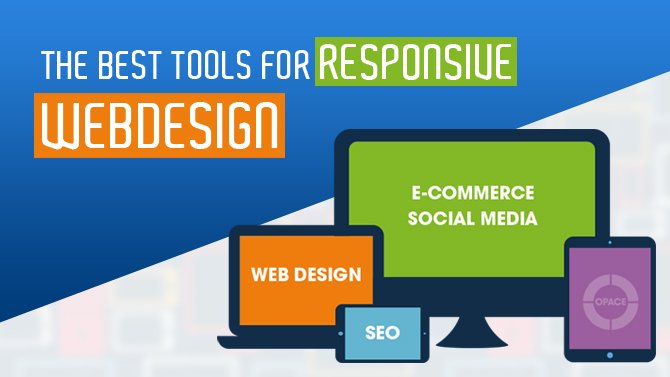Our Offices
USA OFFICE
937, Shore Point Court, # G313,
Alameda - 94501, California, USA.
INDIA OFFICE
C - 81C, Sector - 8,
Noida 201301, UP


The best tools for Responsive Web Design are based on the three elements that make a website responsive. 1. Flexible/Fluid grid, 2. Responsive Images and 3. Media Queries. The best tools are ones that help you to achieve the elements necessary to make your site responsive on as many devices and screen sizes possible.
Using Prebuilt Flexible/Fluid Grids
You can quickly download prebuilt flexible/fluid grids to save time and get your responsive site completed easily and effectively. The other benefit of using prebuilt grids, such as the Golden Grid System, is because it easily adapts 16 to 8 or 8 to 4 columns through “folding”. The Golden Grid System also has a small browser overlay that will expose the grid on your page so you can test your design.
The 1140px CSS Grid is another good prebuilt flexible/fluid grid you can use. This tool allows you to design from a wide desktop resolution down to the smallest of devices. It will fit into the 1280 monitor but will also become fluid and adapt to smaller monitors correctly.
Using a Responsive Calculator will help you with your workflow as well. A responsive calculator will calculate pixels to percentages and also will generate CSS rules that can then be easily copy/pasted into your style sheets.
Tools for Responsive Web Design Images and Text
Another key element to Responsive Web Design is having responsive images and text. To achieve fluid images and text you can use The Filament Group’s Responsive Images. Responsive Images will allow you send appropriately sized images based on the screen resolution. Adaptive Images is based on this same premise. However, with Adaptive Images by Matt Wilcox, PHP and some JavaScript are used to serve the appropriate image size but without the extra mark up.
As for responsive text, there are some plugins available to help improve your workflow. The jQuery plugin, FitText, will make font sizes flexible and helps to achieve scalable headlines. The headlines will fill the width of the parent element. To make bold blocks of text resize responsively you can use the SlabType Algorhythm.
Media Queries Tools for Responsive Web Design
Once you can envision the fluid/flexible layout of your site as well as how to make your images and text responsive across all devices, you now need to concern yourself with media queries. Media queries are necessary to shift the pages elements into a responsive state.
CSS3-Mediaqueries.js is a tool that will enable appropriate rendering on older versions of Internet Explorer as well as other browsers. Adapt.js is a tool that will detect the browser dimensions of the user’s device and it works correctly with most older and newer browsers.
The Categorizr is another helpful tool that will assume devices being used are mobile unless the user’s tablet or desktop informs otherwise. Using the Categorizr allows service of the resources to the browser sympathetically.
These are some of the best Responsive Web Design tools available, but are in no way an all-inclusive list. There are many tools available to help you improve your workflow. When you using Responsive Web Design you will find it is essential to have as many appropriate tools necessary so that you can make the best design in the least amount of time. Many web designers will attest that one of the quickest and most effective ways to improve workflow is to use shortcuts available that will not decrease your creativity. Allowing Responsive Web Design generator tools take on some of the busy-work will not affect the overall creativity of the site. It gives the web designer, more time to focus on making your design fresh and unique.
Subscription Implies Consent To Our privacy Policy
7 Reasons Why Internet Marketing Is Important For Your Business
The 10 Advantages of Using WordPress for Developing Business Website